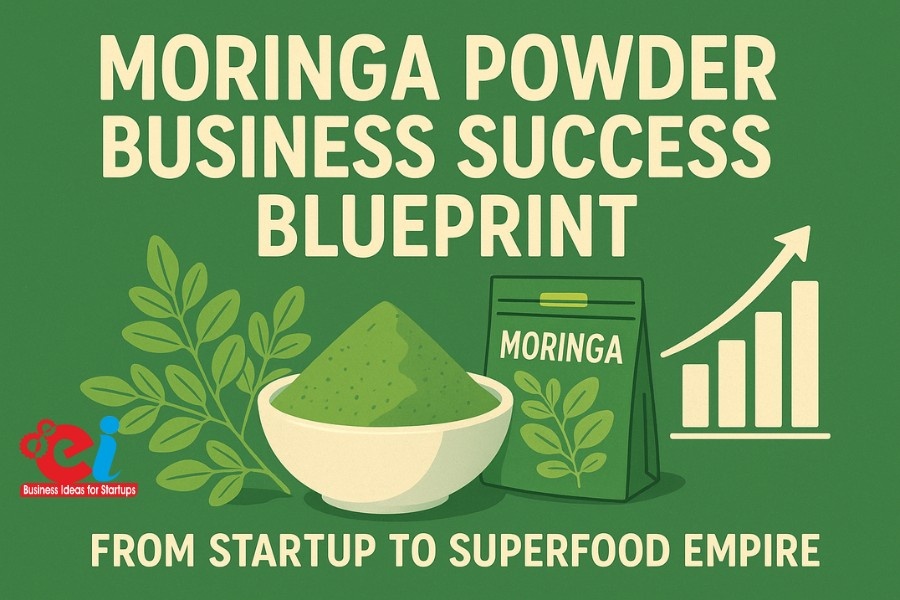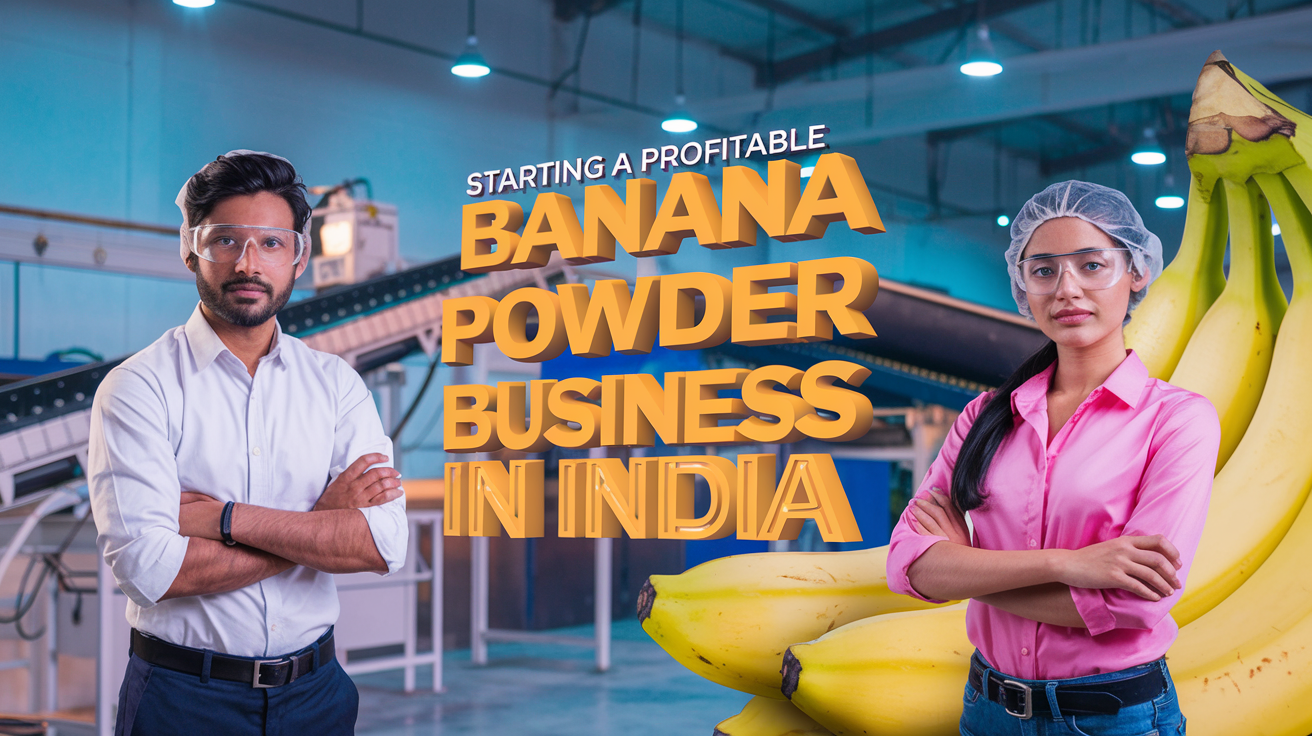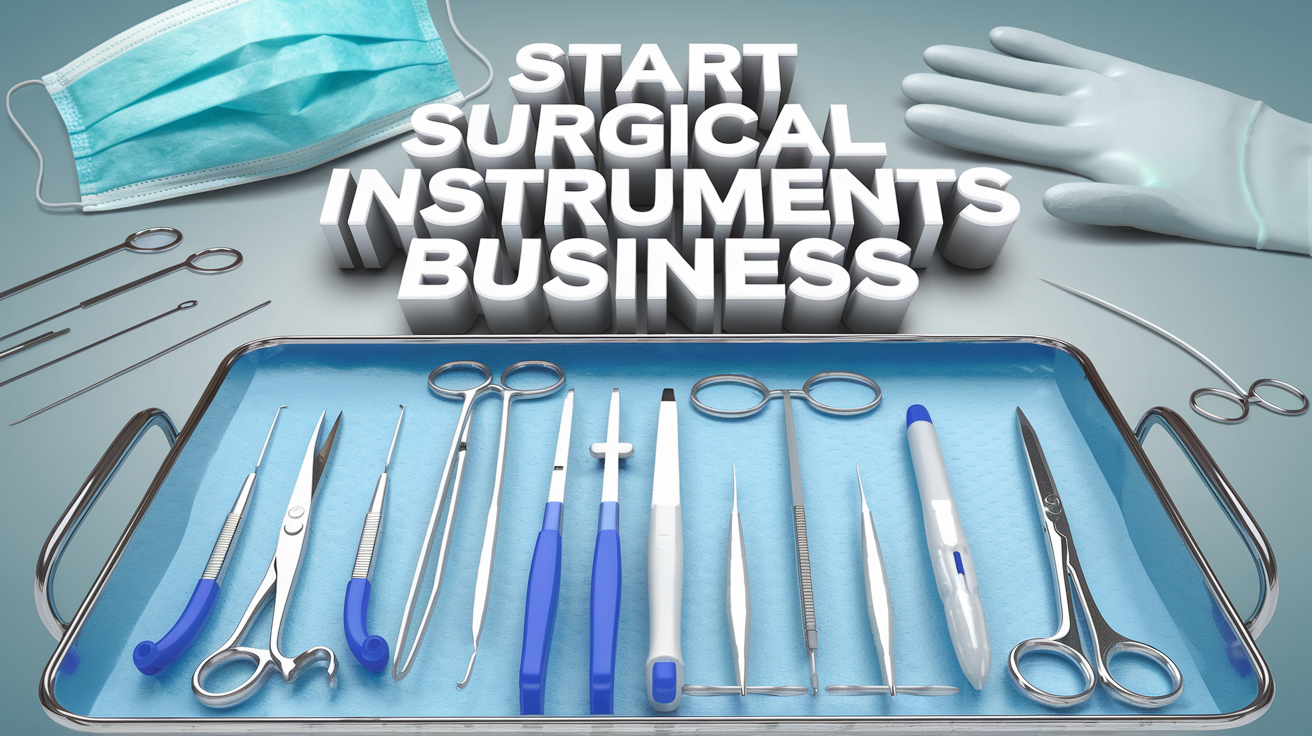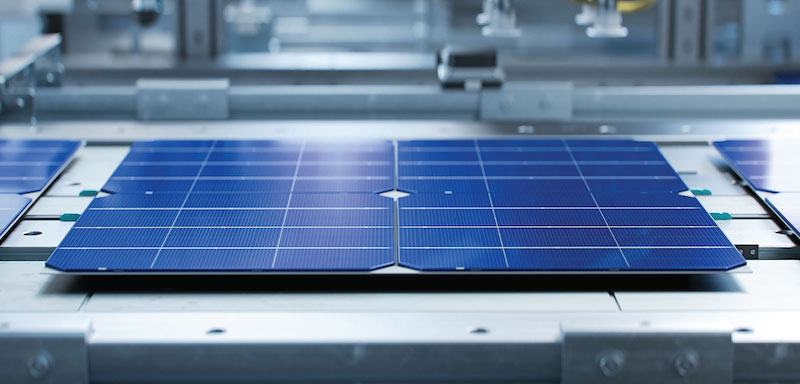The industrial and manufacturing sector offers immense growth and innovation opportunities in the dynamic world of global commerce. With the right knowledge and a strategic eye, aspiring entrepreneurs can achieve significant success in these sectors. This guide examines 15 promising industrial products and explains their market dynamics, potential growth, and important considerations to establish a successful manufacturing business.
We will cover a wide range of manufacturing startup ideas, including specialized chemicals, construction materials, advanced recycling solutions, and essential consumer products. Each product analysis provides a snapshot of the current market size and projected growth (CAGR), as well as key demand drivers. This will help you make informed decisions.
This article also highlights the importance of expert advice. Niir Project Consultancy Services is a specialist in preparing Market Surveys and Detailed Techno-Economic Feasibility Reports. Their reports are comprehensive and cover raw materials, manufacturing processes, plant layouts, financial projections, etc., which helps entrepreneurs evaluate the feasibility of a new industry or business. This helps to reduce the risk of entering capital-intensive industries.
Discover the hidden industrial fortunes that await astute entrepreneurs.
Market Overview and Growth Pathways
The industrial sector is characterised by constant innovation and evolving demand, which are driven by population growth, technological advancements and changing economic landscapes. Understanding the market dynamics is crucial for any new venture, including current valuations and projected growth rates.
Manufacturing Startup Ideas: Comprehensive Market Data Summary
The table below summarizes market size and projected market sizes for 2024, as well as the Compound Annual Rate of Growth (CAGR) along with growth potentials for 15 industrial products.
Visualizing Market Growth
To provide a clearer perspective on the market’s evolution, we have generated several charts highlighting key trends and comparisons across different product categories.
1. Floral Foam
Product Description: Floral foam is a phenolic-based foam used as a base for flower arrangements. It is highly absorbent and keeps flowers in place, making it essential for both artificial and fresh arrangements in floristry. It provides stability and a continuous water supply.
Market Overview: Fresh flower arrangements are essential to floristry and special events. The expansion is aided by an increase in disposable income and the popularity of floral gifts. Alternatives that are biodegradable and environmentally friendly are being developed to address environmental concerns.
Demand and Growth: The projected growth is from USD 5.60 billion in 2024 to USD 9.44 billion by 2030. This represents a CAGR (Compound Annual Growth Rate) of 5.36%. The resilient floristry sector and the constant need for floral arrangement solutions are driving growth. Sustainability is a major trend.
Entrepreneurial Opportunity: Manufacturing involves chemical processes, molding, and other manufacturing activities. Focusing on sustainable alternatives, such as plant-based foams or compostable ones, could be profitable. R&D is essential to developing materials that have a reduced environmental impact. Wholesalers of floristry supplies and event companies are among the distribution channels.
Related: Mahua Flower Alcohol: Traditional Drink of India
2. Sodium Hydrosulfite
Product Description: Sodium Hydrosulphite, also known as sodium dithionite (Na2S2O4), is a white crystalline dust and a powerful reducing compound. It is used in industrial applications to remove oxygen or decolorize.
Market Overview: Driven by extensive use in textile dyeing and printing, pulp and paper bleaching, food preservation, and chemical/pharmaceutical sectors. Demand is directly impacted by the growth of these industries.
Demand and Growth: The projected growth is from USD 1.33 billion in 2020 to USD 1.62 billion in 2032, with a CAGR (Compound Annual Growth Rate) of 2.19%. The demand is stable due to its indispensable role within established industries. Future growth could be attributed to new applications in water treatment.
Entrepreneurial Opportunity: Needs to adhere to regulations and have specialized facilities for chemical production. The opportunities lie in improving production efficiency and sustainability or developing specialized grades to meet niche applications. A long-term strategy is to explore greener reducing agents.
For more information, check our handbooks
3. Maize Starch
Product Description: Corn starch is a common ingredient in food, made from corn kernels. It’s used to thicken and prevent caking. It’s also a versatile raw material for industrial purposes due to its adhesive, binding, and gelling qualities.
Market Overview: A vast market, driven by applications in both food (confectionery and baked goods) as well as industrially (papers, textiles, pharmaceuticals). This market is driven by the growing demand for processed food and industrial growth.
Demand and Growth: The projected growth is significant, with a CAGR of 8.60%, going from USD 23.00 billion in 2024 to USD 44.51 billion by the year 2032. This is due to the expansion of food processing, the rising demand for convenience products, and an increase in bio-based products.
Entrepreneurial Opportunity: Capital investment is required to manufacture maize starch. Focus on starches with a high value (e.g., modified starches or organic/non-GMO). The supply chain management of raw corn is crucial.
Related: Start a Maize Starch Business in India
4. Highway Guard Crash Barrier with Metal Beams (Roll Forming Plant) and Galvanizing Plant
Product Description: A critical safety infrastructure that prevents vehicles from leaving the road. Steel is galvanized and formed by roll-forming for durability in harsh outdoor conditions.
Market Overview: Directly related to road safety initiatives and government spending, as well as infrastructure development. Demand is driven by rapid urbanization and the need to reduce road deaths. Roll forming ensures efficient production, while galvanizing provides durability.
Demand and Growth: The projected growth is from USD 8.66 billion in 2020 to USD 9.35 billion in 2032 with a CAGR of 4.20%. Global investments in road maintenance, safety upgrades, and construction are reflected by this figure.
Entrepreneurial Opportunity: Capital-intensive and requires specialized machinery. Stability is assured by the demand from government infrastructure projects. Focus on innovative galvanizing or barrier designs. It is important to have strong relationships with government contractors.
5. Automated Vehicle Scrapping Unit
Product Description: A sophisticated facility that allows for the efficient and environmentally friendly dismantling of old vehicles. Advanced machinery is used to depollute and dismantle vehicles for reuse. It can also be shredded for materials recovery. Automation maximizes material recovery and increases productivity.
Market Overview: The market is growing due to increased environmental regulations, an increase in ELVs, and a demand for recycled materials. To promote a circular economic system, governments are implementing more stringent disposal policies. The shift from unorganized to automated, organized facilities is a major trend.
Demand and Growth: The projected growth is substantial, with USD 82.03 billion in 2024 rising to USD 154.94 billion by 2032. This represents a CAGR of 7.07%. This reflects a global commitment to resource efficiency and environmental sustainability, as well as a continuous supply of ELVs.
Entrepreneurial Opportunity: Large-scale undertakings requiring substantial capital and specialized machinery. It is a promising business due to the high demand for recycled materials. There are opportunities to develop more efficient depollution techniques or specialized recycling of EV batteries. It is important to form partnerships with auto manufacturers.
6. Silica from Rice Husk Ash
Product Description: Rice Husk Ash is a rich source of amorphous silicon. The extraction of high-purity amorphous silica involves controlled combustion and chemical treatments. Specific properties can be tailored to specific applications.
Market Overview: The market is driven by the increasing demand for eco-friendly and sustainable raw materials. It is a more cost-effective option to silica. Cement, concrete, rubber, and plastics are among the applications. This market is boosted by the focus on waste valorization.
Demand and Growth: The projected growth is from USD 3.40 billion in 2020 to USD 5.28 billion in 2032 with a CAGR (Compound Annual Growth Rate) of 4.50%. The adoption of sustainable materials and the continuous production of rice globally are driving this growth.
Entrepreneurial Opportunity: Setting up an RHA silica extracting facility is an entrepreneurial opportunity, particularly in rice-producing areas. Chemical processing expertise is required. Concentrate on eco-friendly methods or high-purity grades. It is essential to form partnerships with rice mills, industrial users, and other stakeholders.
7. Carbon Black
Product Description: Paracrystalline carbon is a form of carbon that’s produced from the incomplete combustion of petroleum products. Its high surface area makes this a great filler for tires and rubber. Also used as an electrically conductive and pigment agent.
Market Overview: The tire industry dominates the market. Other applications include industrial products, plastics, and inks. Demand is directly influenced by the growth of the automotive, construction, and manufacturing industries. Carbon black that is recycled and sustainable is on the rise.
Demand and Growth: The projected growth is from USD 22.35 billion in 2020 to USD 40.10 billion by 2032 with a 4.80% CAGR. The automotive industry is a major driver, as well as the demand for rubber. Specialty applications are also important.
Entrepreneurial Opportunity: Manufacturing is capital-intensive and complex, with strict environmental laws. The development of eco-friendly methods (e.g., pyrolysis from waste tires) and specialty carbon blacks is are opportunity. It is important to have strong relationships with tire producers.
8. Concrete Sleepers with Prestressed Frames
Product Description: The essential components of railway tracks, holding rails in the correct gauge while transferring loads. These sleepers are made with high-strength concrete and tensioned steel tendons. They offer superior durability and strength to wooden ones.
Market Overview: Global investments in the development, modernization, and maintenance of railway infrastructure are driving this market. As countries upgrade and expand their railway networks, demand increases. This market is boosted by the focus on long-lasting and sustainable infrastructure solutions.
Demand and Growth: The demand for concrete sleepers is expected to increase from USD 6.20 billion in 2020 to USD 10.10 billion in 2032 with a CAGR of 7.2%. Concrete sleepers offer a longer service life, reflecting the global drive for efficient and sustainable transport systems.
Entrepreneurial Opportunity: Manufacturing is a complex process that requires precasting expertise and specialized facilities. The industry is capital-intensive, but there is stable demand from railway authorities. Focus on innovative designs of sleepers or advanced manufacturing techniques. Quality control and compliance with railway standards are paramount.
9. Rice Husk Pellets
Product Description: Rice husks are compressed into biomass fuel. Compacting increases the energy density and reduces transport costs. It also improves handling. It is an eco-friendly, renewable energy source with a high calorific content.
Market Overview: The market is driven by the growing demand for renewable energies and efficient agricultural waste management. It serves as fuel for industrial boilers and electricity plants. It is boosted by the growing awareness of climate change. Rice-producing countries are the main players.
Demand and Growth: The projected growth is from USD 2.60 billion in 2020 to USD 4.50 billion by 2032 with a CAGR of 7.53%. This indicates a shift to sustainable energy and the economic viability of using agricultural waste as energy. A stable supply chain is ensured by the availability of raw materials.
Startup Opportunity: To set up a pelletizing, grinding, and drying plant, you will need the necessary machinery. Demand is expected to be high for a long time. Pelletizing can be optimized, blended with other biomasses, or specialized pellets developed. It is important to have strong relationships with industrial energy users and rice mills.
10. Sodium Metabisulfite
Product Description: Sodium Metabisulfite is an inorganic compound that can be used as a preservative, disinfectant, and antioxidant. It is a white, crystalline powder that releases sulfur dioxide upon dissolution in water.
Market Overview: Diverse due to wide applications in the food and beverage industry (winemaking and brewing), as well as water treatment (dechlorination) and industrially. The increasing demand for processed food and concerns about water quality drive growth.
Demand and Growth: The projected growth is USD 0.48 billion from 2024 to 2032 at a CAGR of 6.30%. Its essential role in water treatment and food preservation is a major driver. The food and beverage industry is a key driver.
Entrepreneurial Opportunity: Manufacturing is a good opportunity for entrepreneurs. It involves chemical synthesis and high-quality standards. There are opportunities in optimizing production or developing a higher purity grade or focusing more on sustainable methods. It is essential to have a distribution system that is adaptable to various industries. Food safety and industry standards must be adhered to.
11. Curcumin Extraction Unit
Product Description: This unit processes turmeric rhizomes to extract curcumin, a polyphenol known for its anti-inflammatory and antioxidant properties. The process includes pre-cleaning, drying, grinding, solvent extraction, filtration, concentration, and purification.
Market Overview: The market is growing due to increased consumer interest in natural dietary supplements, demand for natural food colorants, and expansion in the pharmaceutical, cosmetic, and nutraceutical industries. The shift towards naturally derived ingredients is a key market driver.
Demand and Growth: The market is projected to grow from $0.10 billion in 2024 to $0.21 billion by 2032, with a CAGR of 10.57%. This growth reflects the rising demand for natural health products and broader use of curcumin across various industries.
Entrepreneurial Opportunity: Requires investment in specialized equipment, chemical processing knowledge, and high-quality turmeric. Success factors include efficient distribution channels, eco-friendly methods, varied grade production, and streamlined extraction methods.
For more information check out this video
12. Tipper Body Building
Product Description: This involves creating and assembling the back sections of trucks used for transporting loose materials like sand, gravel, and construction waste. Construction involves strong steel or aluminum materials, electric centrifugal hydraulic lifts, and specialized liners.
Market Overview: The market is driven by construction, mining, infrastructure development, and waste management. Government investments in waste management services also create new demand.
Demand and Growth: The global market is projected to grow from $49.01 billion in 2024 to $69.42 billion by 2032, with a CAGR of 5.10%. Continued growth in construction and mining, along with innovations in machinery, contributes to this growth.
Entrepreneurial Opportunity: Requires expertise in metal fabrication, welding, hydraulics, and automotive engineering, along with significant machinery investment. Custom designs are a key profit opportunity, with the construction and mining sectors being ideal starting points.
13. Laminated Acrylic Sheets
Product Description: Involves adding protective garments or films, often layering to enhance functionality. Laminated acrylic is a primary material, providing a strong, protective substrate.
Market Overview: Driven by the use of plastic materials in furniture, signage, and architecture, with growing demand in the automotive sector. Increased advertising in construction, the need for high-gloss finishes, and rising signage applications boost market preference for acrylic.
Demand and Growth: Expected to increase from $4.67 billion in 2024 to $8.37 billion by 2032, with a CAGR of 6.70%. Strong activity in construction and interior design, along with demand for modular furniture, drives growth.
Entrepreneurial Opportunity: Manufacturing processes include extrusion, casting, and lamination. Focus on custom sheets, designing, and laminating eco-friendly materials with improved functionalities. Partnerships with interior designers and furniture makers are beneficial.
14. Sanitary Napkins
Product Description: Wearable absorbent materials used during menstruation, consisting of a top sheet, absorbent core, back sheet, and adhesive. Manufacturing involves prepping materials, layering, cutting, sealing, and hygienic packaging.
Market Overview: A crucial segment of feminine hygiene, driven by the female population, increased awareness of menstrual hygiene, and access to hygiene products. Government programs and rising income levels also contribute to growth, with a shift towards organic, bio-based, and sustainably reusable products.
Demand and Growth: Expected to increase from $28 billion to $38 billion by 2033, with a 3.5% CAGR. Global focus on improving menstrual hygiene, rising female literacy, and demographic changes are key drivers, with the essential nature of the product ensuring market stability.
Entrepreneurial Opportunity: Requires automated equipment tailored to specific processes, attention to hygiene, and a focus on cost-effective conventional pads or organic/biodegradable options. Innovative designs can sharpen competitive advantage, with effective marketing and comprehensive distribution networks being essential.
15. E-Waste Recycling Plant
Product Summary: Collects, dismantles, and processes discarded electronic equipment to recover valuable materials. The process includes manual sorting, mechanical shredding, and advanced separation to recover metals, plastics, and glass.
Market Analysis: Experiencing explosive growth due to increasing electronics consumption, rapid product obsolescence, and poor public compliance with environmental standards. Governments are implementing stricter regulations and EPR schemes, with strong economic incentives to recover valuable materials.
Demand and Growth: Projected to grow from $30.40 billion in 2024 to $94.20 billion by 2032, demonstrating a strong CAGR of 13.40%. This reflects the substantial volume of E-waste generated worldwide and growing regulatory and economic efforts to recycle it.
Entrepreneurial Idea: Capital-intensive, focusing on advanced recycling technologies for specific types or closed-loop systems of E-waste. Strong growth potential and regulatory support make this concept appealing. Equipment and background knowledge in environmental management are essential, along with strong business relations with electronic product manufacturers.
Find Best Idea for Yourself With our Startup Selector Tool
Frequently Asked Questions (FAQs)
Q1: What are the most important considerations when starting a manufacturing business?
A1: Key factors include thorough market research, evaluating the available market, raising capital, obtaining a dependable supply of raw materials, mastering the manufacturing processes, compliance with laws, a well-crafted business plan, and a good team. Availability of capital and efficient distribution also matter.
Q2: How do I evaluate the viability of a new industrial initiative?
A2: Conduct a detailed techno-economic feasibility study encompassing market, technical, financial, and management evaluations. Companies like Niir Project Consultancy Services (NPCS) prepare detailed reports useful for investment decisions.
Q3: What is the importance of technology in manufacturing?
A3: Technology enables process automation, more efficient operations, improved quality, and reduced manufacturing wastes. Modern technologies like AI, IoT, robotics, and additive manufacturing are incorporated, creating smart factories and enabling agile production.
Q4: Why do companies need to consider sustainability in industrial undertakings?
A4: Sustainability is important due to demands from consumers, regulators, and investors. Sustainable waste management, energy efficiency, renewable sources, and the circular economy offer lowered operating costs, elevated brand image, compliance, and a competitive edge.
Q5: What are some common problems faced by startups in the manufacturing industry?
A5: Common issues include complicated regulations, high initial capital, fierce competition, acquiring raw materials, managing the supply chain, and obtaining skillful employees. Addressing these issues requires meticulous planning, strategic partnerships, and expert guidance.
Q6: How can I obtain trustworthy and reliable data and projections for a certain industrial product?
A6: Consult reputable market research reports, industry associations, governmental publications, and specific business intelligence sites. Consulting firms like NPCS can offer tailored analysis for specific needs.
Q7: How important is the “CAGR” in analyzing the market?
A7: CAGR (Compound Annual Growth Rate) provides a smoothed average annual growth rate, assuming all profits are reinvested. A higher CAGR indicates sharper growth and better chances for expansion and profitability, making it a critical metric for investment decisions.
Q8: What is the reason for considering, alongside the current market size, its growth potential?
A8: It’s important for a balanced assessment. A large current market size indicates established demand but high competition, while high growth potential suggests emerging opportunities and low saturation. A combined consideration helps pinpoint significant markets with strong growth prospects.


























